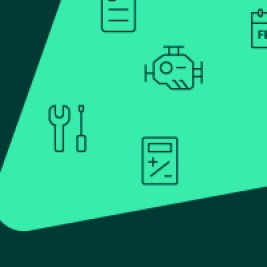
Upside down.
It’s a position you usually want to avoid unless you’re a gymnast or a daredevil, but we aim to give you six ways to help you keep from going upside-down in your next vehicle purchase. Negative equity, or being upside-down, is a very common issue in vehicle financing today, and these tips will help you understand what steps you need to take prior to financing your next car.

What does upside-down mean?
Upside-down means you owe more money on your vehicle than it’s worth. This can happen in a lot of different ways, and we hope to help you avoid this scenario. When you want to trade in a vehicle you’re upside-down on, you’ll really feel the impact of some of your previous finance decisions.
Tip 1
Be diligent with your vehicle research. If you’re purposeful in your research, you can discover how much options like DVD players or heated seats cost, how those options will impact the price and you’ll have a rough ballpark of how much tax, title and licensing fees will add to your loan, if you’re in a state that includes those in the price of your purchase. Once you know how much the extra stuff costs, you’ll be able to realistically consider what vehicle you can afford.
Tip 2
If you’re buying a new vehicle, it can definitely pay to research the rates your chosen manufacturer is advertising, if any. It also can’t hurt to get pre-qualified at a lender like Drive®, which only takes a couple of minutes and doesn’t impact your credit score. With a Drive pre-qualification, you can see all the cars at a dealership that fit your budget.
Tip 3
You should bring roughly 20% as a down payment, between cash and trade. New vehicles typically depreciate about 20% in their first year, and they lose about 50% of their value after three years. Bringing 20% cash down to your loan will offset that depreciation and keep you right-side up.
Tip 4
When you’re choosing your financing term, try to choose the shortest term you can afford. The payments will usually be higher, but you’ll pay off the loan faster. This will save you money in terms of interest charged over a longer-term loan, but it has the added benefit of potentially keeping you from flipping upside-down.
Tip 5
People often get sick of their old car before they’ve paid off their loan for it. This is one of the primary drivers of upside-down financing. If you know you’re going to be tired of a car after two or three years, you should absolutely consider a lease.
Tip 6
Paying off your old car before you buy a new one will help you keep from rolling negative equity into your new vehicle loan and keeps you paying on one car at a time. If you trade a car you owe money on, you’ll likely end up including the remainder of your balance on that car in the financing for your new vehicle. Most dealerships will work to find you a new car with enough rebates to cover the amount of negative equity you bring to the table, but it’s a bad position to start off in.
Next time you’re considering a new vehicle, think about pre-qualifying with Drive. We can help you find a car that fits your needs once you’re pre-qualified. A pre-qualification doesn’t impact your credit score, and it could save you money in the long term if you use tools like our Budget Customizer.
These statements are informational suggestions only and should not be construed as legal, accounting or professional advice, nor are they intended as a substitute for legal or professional guidance.
Drive is not a credit counseling service and makes no representations about the responsible use of or restoration of consumer credit.


